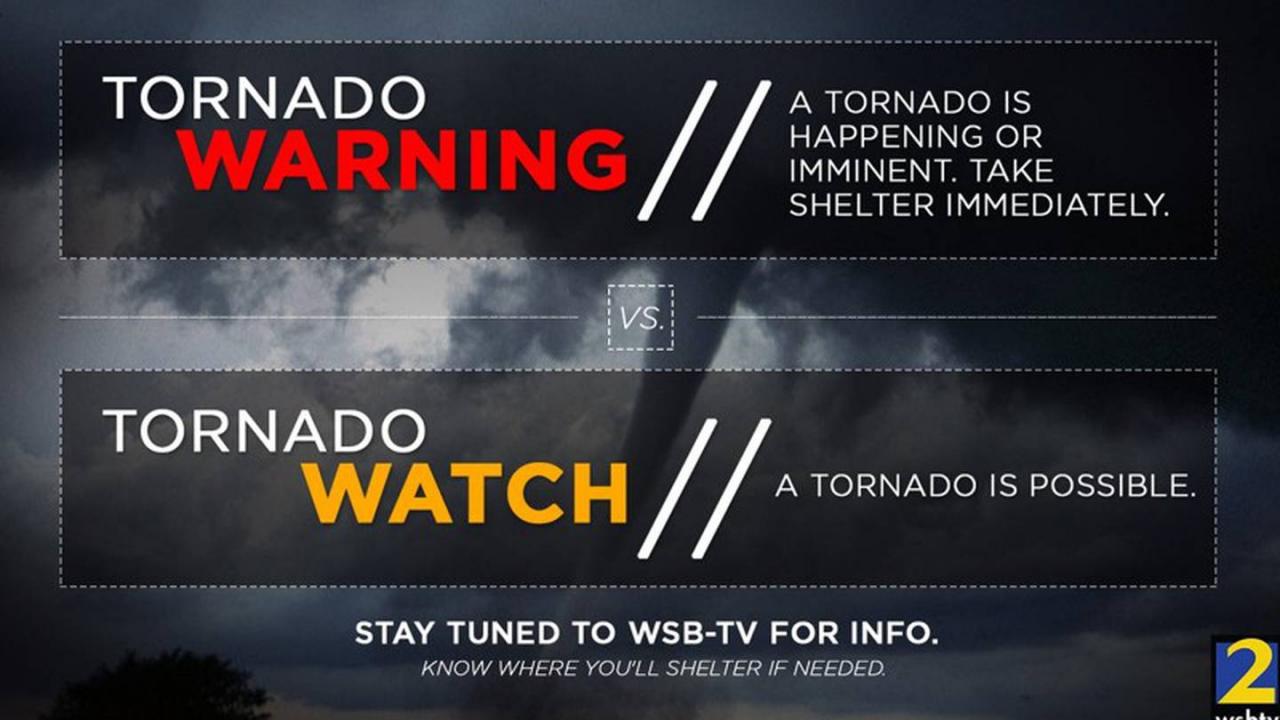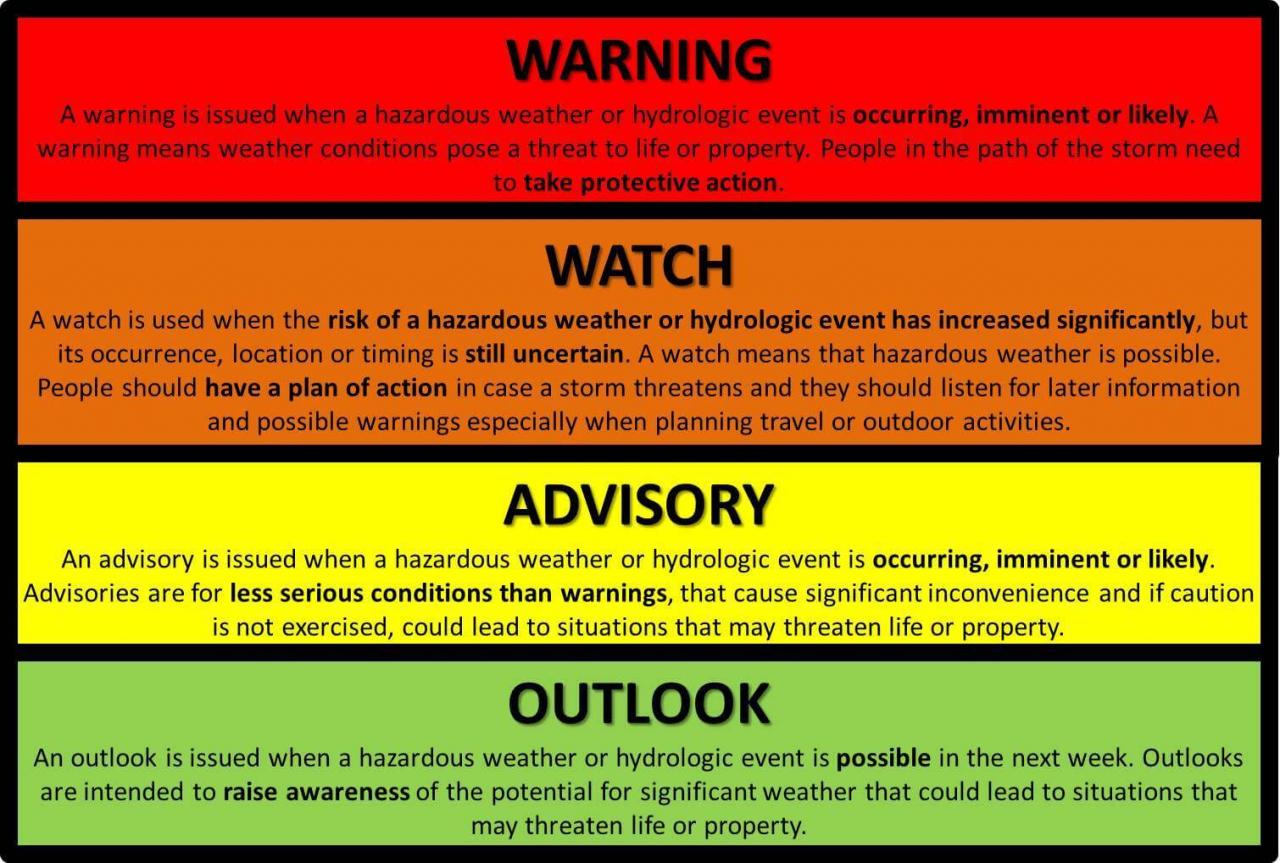
Is a watch or warning worse – In the realm of emergency preparedness, the distinction between a watch and a warning can have profound implications. This article delves into the nuances of these two alert levels, exploring their definitions, consequences, communication strategies, and ethical considerations, to empower individuals and communities to navigate potential risks with greater clarity and effectiveness.
Watches and warnings serve as crucial tools in the early detection and dissemination of potential hazards, ranging from severe weather events to public health emergencies. Understanding the differences between these two alerts is essential for timely and appropriate response, enabling us to minimize the impact of impending threats.
Watches and Warnings: A Guide to Staying Informed and Safe

Watches and warnings are essential tools for staying informed about potential hazards and taking appropriate action to protect yourself and your community. Understanding the difference between these two alerts and the measures to take in response is crucial for minimizing risks and ensuring public safety.
In the Netherlands, King’s Day is a vibrant celebration that honors the country’s rich history, culture, and community. Known as Koningsdag, it’s a day filled with orange-clad revelers, street parties, and a sense of national unity. The celebration is a testament to the strong bond between the Dutch people and their monarchy.
Definition and Explanation
A watchis issued when conditions are favorable for a hazardous event to occur. It indicates a potential threat and advises people to be prepared and stay informed.
A warningis issued when a hazardous event is imminent or already occurring. It signifies a serious and immediate threat and urges people to take immediate action to protect themselves.
In Nebraska, the Lincoln tornado left a devastating trail of destruction. The storm ripped through the city, causing widespread damage and leaving thousands without power. The community is now rallying together to rebuild and recover from this tragic event.
The severity of watches and warnings is often indicated by color-coded systems, with yellow typically representing a watch and red indicating a warning.
Another significant tornado event occurred in Elkhorn, Nebraska . This comprehensive guide provides detailed information on the history, safety measures, and recovery efforts related to the tornado. It’s an essential resource for understanding the impact and resilience of this Midwestern community.
Impact and Consequences
Watches and warnings can have significant impacts on individuals and communities. A watch may prompt people to gather supplies, make evacuation plans, or take other precautionary measures.
A warning, on the other hand, requires immediate action to seek shelter, evacuate the area, or take other life-saving steps. Ignoring warnings can have severe consequences, including property damage, injuries, or even death.
Communication and Dissemination
Watches and warnings are communicated through various channels, including television, radio, social media, and mobile apps. The National Weather Service (NWS) is responsible for issuing watches and warnings in the United States.
Effective communication strategies involve using clear and concise language, providing timely updates, and using multiple channels to reach a wide audience.
Legal and Ethical Considerations, Is a watch or warning worse
Issuing watches and warnings carries legal implications. Emergency managers and meteorologists have a duty to provide accurate and timely information to the public.
There is also an ethical responsibility to balance public safety with individual rights. Warnings should only be issued when there is a clear and imminent threat, and individuals should be given ample time to respond.
Ending Remarks: Is A Watch Or Warning Worse

Ultimately, the effectiveness of watches and warnings lies in their ability to strike a delicate balance between public safety and individual rights. By comprehending the distinctions between these alert levels, we can foster a culture of informed preparedness, where communities are empowered to make informed decisions and take proactive measures to safeguard themselves and their loved ones.
Clarifying Questions
What is the primary difference between a watch and a warning?
A watch indicates the potential for a hazardous event, while a warning signifies that the event is imminent or already occurring.
How do I know which response measures to take based on the alert level?
Watches typically call for monitoring the situation and staying informed, while warnings require immediate action, such as evacuation or seeking shelter.
What are the most effective channels for communicating watches and warnings?
Multiple channels, including weather radios, mobile alerts, and social media, should be utilized to ensure timely and widespread dissemination of alerts.






